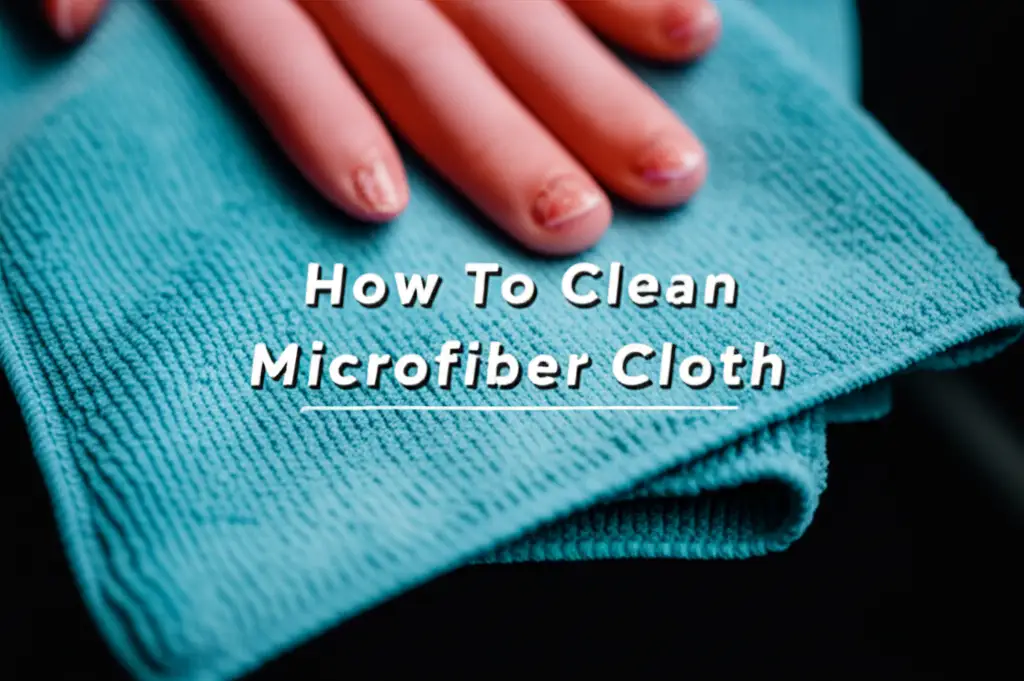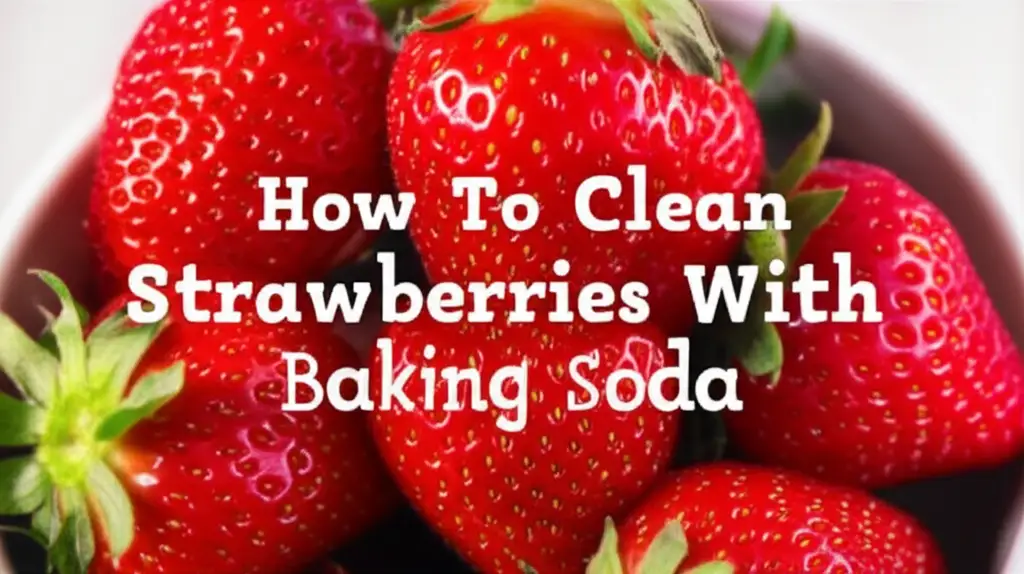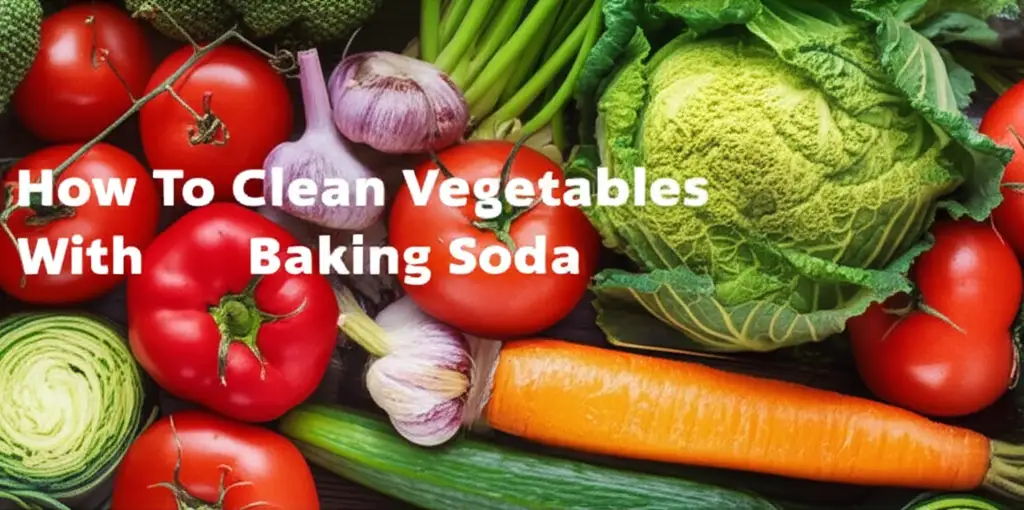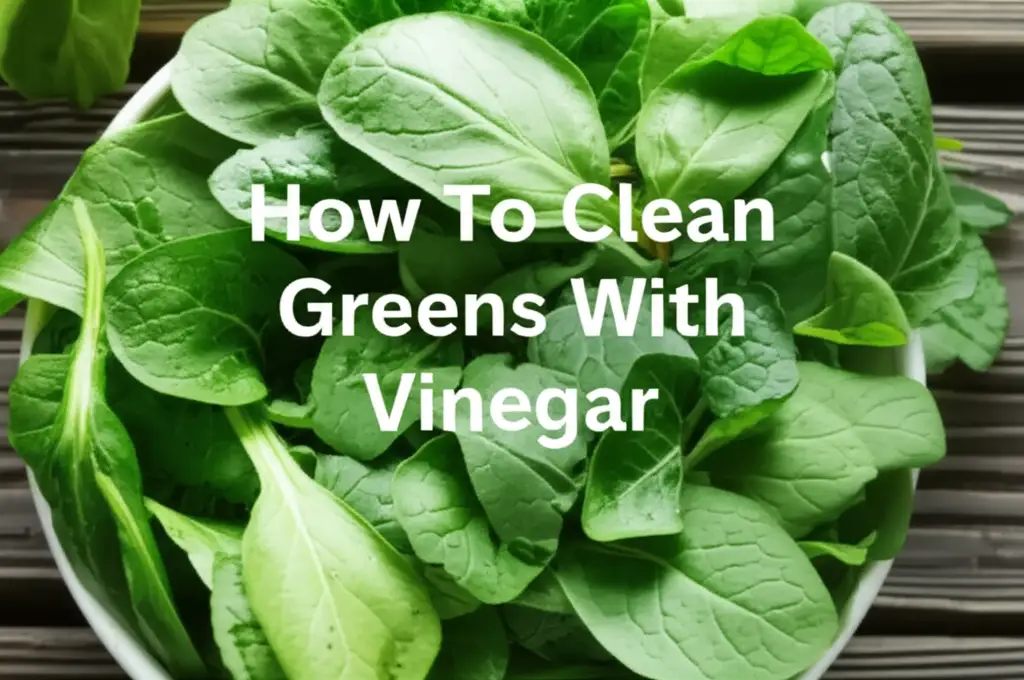· Household Cleaning · 19 min read
How To Clean Fruit With Vinegar
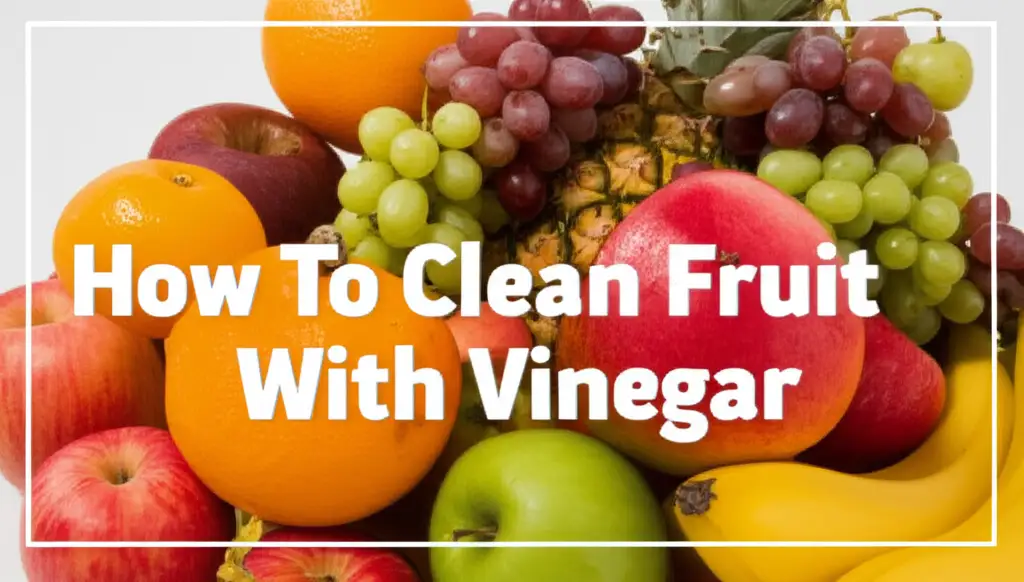
Unlock the Freshness: How To Clean Fruit With Vinegar
Do you ever think about what might be clinging to your fresh fruit? I often do. From invisible pesticides to common dirt and even waxy coatings, fresh produce can carry more than just vitamins. Simply rinsing fruit under tap water might not remove everything. This is where a simple, natural solution comes in: vinegar. Cleaning fruit with vinegar offers a powerful yet gentle way to ensure your family enjoys truly clean, safe, and delicious produce.
Many of us want to keep our families healthy. We try to eat more fruits and vegetables. But then we worry about what we are actually consuming. Using a vinegar fruit wash helps you feel more confident about your food. It is an easy and effective method. This article will show you how to clean fruit with vinegar, explain why it works so well, and provide step-by-step instructions. We will cover different fruit types and address common questions. Get ready to transform your fruit cleaning routine and enjoy fresher produce.
Takeaway:
- Vinegar effectively removes pesticides, dirt, and bacteria from fruit.
- A simple vinegar bath is a natural and safe cleaning method.
- Proper rinsing after a vinegar wash is crucial for taste and safety.
- Different fruits may require slightly different cleaning approaches.
To clean fruit with vinegar, create a solution of one part white vinegar to three parts water in a large bowl. Soak most fruits for 5-10 minutes, then rinse thoroughly under cold running water. This simple method helps remove pesticides, dirt, and bacteria, providing a natural and effective way to ensure your produce is cleaner before consumption.
Why Clean Fruit with Vinegar? Unveiling the Benefits
When you buy fresh fruit from the grocery store or a farmer’s market, it often carries more than you see. You might wonder, why bother cleaning fruit with vinegar when water seems enough? The answer lies in the effectiveness of vinegar. It works wonders on hidden contaminants. I have personally seen the difference it makes.
Fruit surfaces can harbor various undesirable elements. These include dirt, soil, and tiny insects. Farmers use pesticides to protect crops. These chemicals can remain on the fruit skin. Waxes are sometimes applied to fruit to make it look shiny or extend shelf life. These waxes can trap dirt and chemicals. Tap water alone often struggles to remove these substances fully.
Vinegar is a natural disinfectant. It contains acetic acid. This acid helps break down residues. It lifts away dirt and wax. It also kills many types of bacteria and mold spores. This means your fruit becomes significantly cleaner. You reduce your exposure to potentially harmful substances. This makes your fruit safer to eat.
Using vinegar for fruit cleaning is also an eco-friendly choice. It is a natural product. You avoid harsh chemical cleaners. These chemicals can be expensive and harmful to the environment. Vinegar is cheap and readily available. It is a simple solution for a cleaner, healthier plate. I feel good knowing I am using something natural. It protects my family and the planet.
Choosing the Right Vinegar for Fruit Washing
You have decided to clean your fruit with vinegar. Now you might wonder which type of vinegar is best. The most common and effective choice for fruit washing is distilled white vinegar. It is clear, inexpensive, and readily available in most stores. White vinegar has a consistent acidity level. This makes it reliable for cleaning tasks. Its neutral color also means it will not stain your fruit.
Some people consider using apple cider vinegar (ACV). ACV has many health benefits when consumed. However, for cleaning fruit, white vinegar is superior. Apple cider vinegar has a distinct odor and flavor. It can sometimes leave a subtle taste on your fruit if not rinsed very well. White vinegar, on the other hand, leaves no lingering taste or smell after proper rinsing. I always choose white vinegar for this reason.
The acetic acid in white vinegar is key. It acts as a powerful cleaner and disinfectant. This acid works to break down waxes and residues. It kills bacteria and mold. The standard concentration of white vinegar is typically 5% acetic acid. This concentration is safe and effective for cleaning produce. You do not need stronger concentrations. They might be too harsh for delicate fruits.
Always use food-grade vinegar for cleaning produce. Most white vinegars sold in grocery stores are food-grade. Avoid industrial-strength vinegars. These are not safe for food contact. Stick with what you would use for cooking. This ensures safety. Choosing the right vinegar is a simple step. It makes your fruit cleaning process effective and safe.
Step-by-Step Guide: How to Clean Fruit with Vinegar
Cleaning fruit with vinegar is a simple process. It only takes a few minutes. I follow these steps every time I bring produce home. The general method works for most fruits. However, some delicate fruits need special care. Here is my guide to ensure your fruit is sparkling clean.
Preparing the Vinegar Solution
First, get a large bowl or a clean sink. You want enough space to submerge your fruit. Then, prepare your vinegar solution. The ideal ratio is one part white vinegar to three parts water. For example, if you use one cup of vinegar, add three cups of water. The exact amount depends on how much fruit you are cleaning. Mix the solution well.
Cleaning Process for Various Fruits
Once your solution is ready, it is time to wash the fruit. Remember to handle different fruits carefully.
Berries and Delicate Fruits
Berries like strawberries, raspberries, and blueberries are very fragile. They absorb water quickly. Soaking them too long can make them mushy. For these fruits, a quick wash is best.
- Place berries in a colander.
- Dip the colander into the vinegar solution for about 30 seconds to 1 minute.
- Do not let them soak for extended periods.
- Gently swish them around.
- Lift the colander and rinse the berries thoroughly under cool, running water. Ensure all vinegar residue is gone.
- Pat them dry very gently with a clean paper towel. Or, let them air dry on a clean towel.
- I find this method keeps berries fresh longer too.
Apples, Pears, and Harder Produce
Fruits with firm skins, like apples, pears, oranges, and bell peppers, can handle a longer soak.
- Place these fruits directly into the vinegar solution.
- Let them soak for 5 to 10 minutes. This allows the vinegar to work on waxes and pesticides.
- Use a clean produce brush or your hands to gently scrub the surface of the fruit while it is in the solution. This helps remove stubborn dirt.
- After soaking, remove the fruit. Rinse each piece thoroughly under cold, running water.
- Dry them completely with a clean cloth or paper towel before storing. This prevents mold.
Grapes and Cherries
Grapes and cherries often come in bunches. They need a careful wash to reach all crevices.
- Keep grapes and cherries on their stems for washing. This helps keep them intact.
- Place the bunches into the vinegar solution.
- Let them soak for 5 to 10 minutes, swishing occasionally.
- After soaking, lift the bunches out.
- Rinse them extensively under running water. Make sure water flows through all parts of the bunch.
- Pat them dry or spread them on a clean towel to air dry completely.
- I always take this extra time. It makes a big difference in how fresh they taste.
Rinsing is the most important step after the vinegar bath. You want to remove all traces of vinegar. This ensures your fruit tastes like fruit, not vinegar. Proper drying is also vital. Excess moisture can lead to spoilage and mold growth. Following these steps ensures your fruit is clean and ready to enjoy.
Beyond Vinegar: Combining with Baking Soda for Enhanced Cleaning
Sometimes, fruit needs an extra cleaning boost. This is especially true for items with tough waxy coatings or persistent dirt. I have found that combining vinegar with baking soda offers a powerful solution. This duo creates a fizzing reaction. This reaction helps lift away even more stubborn residues. It is a natural and highly effective method. This method builds on the basic vinegar wash.
Using vinegar and baking soda together for cleaning is a common household trick. The combination works because baking soda is an abrasive. It is also a mild alkali. Vinegar is an acid. When they mix, they create carbon dioxide gas bubbles. These bubbles help dislodge dirt, pesticides, and waxes from the fruit’s surface. It is like a tiny, gentle scrubbing action happening all over your produce. I often use this method for apples or bell peppers.
Here is how you can use this enhanced cleaning method:
- Prepare the Vinegar Soak First: Start by soaking your fruit in the vinegar and water solution as described earlier. Use the 1 part vinegar to 3 parts water ratio. Let the fruit soak for about 5 minutes. This begins to loosen surface contaminants.
- Add Baking Soda: After the initial soak, remove the fruit from the vinegar solution. Do not rinse yet. Place the fruit into a separate bowl. Sprinkle about 1-2 tablespoons of baking soda over the fruit.
- Create the Paste/Scrub: Add a small amount of the vinegar solution (or just water) to the baking soda on the fruit. You want to create a paste-like consistency.
- Gentle Scrubbing: Gently rub the baking soda paste over the surface of each fruit. You can use your hands or a soft brush for firmer fruits. The fizzing action will start immediately. This scrubbing helps to physically remove residues.
- Thorough Rinsing: This step is crucial. Rinse each piece of fruit thoroughly under cold, running water. Ensure all traces of baking soda and vinegar are gone. Any remaining residue could affect the taste.
- Dry Completely: Pat the fruit dry with a clean towel. Or, let it air dry completely on a clean surface.
This method is especially good for non-porous fruits like apples, cucumbers, or lemons. It is too abrasive for delicate berries. This powerful combination works wonders on many surfaces. You can learn more about its versatility in cleaning around your home by reading about how to clean with vinegar and baking soda. I find this combined approach leaves my fruit feeling incredibly clean.
Addressing Common Concerns: Does Vinegar Change Fruit Taste?
It is a common question. People often worry that using vinegar to clean fruit will make it taste sour. I had this concern too when I first started. The good news is, if you follow the steps correctly, your fruit will taste exactly as it should. It will not have a vinegary flavor.
The key to preventing any taste alteration is thorough rinsing. Vinegar is acidic. It can leave a sharp taste if not fully removed. This is why the rinsing step is so important in the cleaning process. After the vinegar soak, place your fruit under cold, running tap water. Rinse each piece individually. For berries or grapes, rinse them in a colander under a strong stream of water. Swish them around gently.
Rinse the fruit until you can no longer smell any vinegar. Your nose is a good indicator here. If you smell vinegar, rinse more. The goal is to wash away all the vinegar solution. This includes any dirt, pesticides, or wax the vinegar has loosened. This ensures you only taste the natural sweetness and flavor of the fruit itself.
I sometimes give a quick sniff test after rinsing. If there is even a hint of vinegar, I rinse again. This extra minute or two of rinsing makes all the difference. It ensures that the vinegar acts purely as a cleaning agent. It does not become an unwanted flavor enhancer.
Also, the concentration of the vinegar solution matters. Using a diluted solution (1 part vinegar to 3 parts water) is effective without being overly strong. A highly concentrated vinegar solution would be harder to rinse off completely. It might leave a residual taste. Stick to the recommended dilution. This helps ensure your fruit remains delicious and fresh-tasting. Enjoy your clean, natural fruit without any surprising flavors!
Storing Cleaned Fruit Safely: Maximizing Freshness
Cleaning your fruit with vinegar is a great first step. But proper storage is just as important. It ensures your efforts are not wasted. You want your clean fruit to stay fresh for as long as possible. Incorrect storage can lead to quick spoilage. I have learned a few tricks over time.
The most critical factor after washing is drying. Any lingering moisture on the fruit’s surface creates an ideal environment for bacteria and mold to grow. Mold can develop quickly in damp conditions. If you ever have issues with mold around your home, including how it grows in damp areas, understanding how to clean mold with vinegar can offer insights into its removal. After rinsing your fruit, gently pat it completely dry with a clean paper towel or a soft cloth. For berries, spread them in a single layer on a clean towel. Let them air dry for a while before storing. This step prevents premature spoilage.
Once dry, store your fruit correctly. Different fruits have different needs.
- Hardy Fruits (Apples, Pears, Citrus): These can often be stored at room temperature on a counter for a few days. For longer storage, place them in the crisper drawer of your refrigerator. They should be in an open container or a breathable bag.
- Berries (Strawberries, Blueberries, Raspberries): These are delicate. They need refrigeration. After drying, store them in a single layer in an airtight container lined with a paper towel. The paper towel absorbs any remaining moisture. This helps prevent mold growth. Do not wash berries until just before you eat them if you plan to store them for several days. Washing them too far in advance can make them spoil faster.
- Grapes and Cherries: Store these unwashed in their original bag or a perforated bag in the refrigerator. Wash them just before eating. If you have washed a large batch, dry them thoroughly. Then store them loosely in an open container in the fridge.
Avoid storing fruits too tightly packed. Air circulation helps keep them fresh. Also, keep fruits that produce ethylene gas (like apples, bananas, and tomatoes) separate from ethylene-sensitive fruits (like berries, lettuce, and broccoli). Ethylene can cause other fruits to ripen and spoil faster. By drying and storing your fruit properly, you extend its shelf life. This means less waste and more delicious, clean fruit for you to enjoy.
Vinegar Wash vs. Other Methods: A Comparison
You have many options when it comes to cleaning fruit. Some people use only water. Others buy commercial produce washes. I have tried several methods over the years. My experience consistently shows that a vinegar wash stands out. It offers unique benefits that other methods often miss.
Water-Only Rinse: Many people simply rinse fruit under tap water. This method is better than nothing. It removes loose dirt and some surface debris. However, water alone is not effective at removing pesticides, waxes, or many types of bacteria. Water has no disinfectant properties. It cannot break down sticky residues. I used to rely solely on water. I noticed a visible difference when I switched to vinegar. The fruit felt cleaner.
Commercial Produce Washes: The market offers various specialized produce washes. These often claim to remove pesticides and bacteria. Some may contain natural ingredients. Others have chemicals. They can be expensive. Their effectiveness varies. You also have to consider if you want to add another manufactured product to your food preparation. I prefer knowing exactly what I am using. Vinegar is a single, natural ingredient. It gives me peace of mind.
Vinegar Wash: The vinegar wash combines effectiveness with natural ingredients. It leverages acetic acid. This acid is a powerful agent.
- Pesticide Removal: Studies suggest vinegar can be more effective than water at removing certain pesticide residues. The acid helps to break down the chemical bonds.
- Bacteria and Mold: Vinegar is a known disinfectant. It kills many types of bacteria, including E. coli and Salmonella. It also inhibits mold growth. This is a big advantage for food safety.
- Wax Removal: Vinegar helps dissolve the waxy coatings often applied to fruits. This makes the fruit truly clean.
- Cost-Effective and Natural: Vinegar is inexpensive and readily available. It is a natural product. You are not introducing harsh chemicals to your food.
- Taste Neutral (with proper rinsing): As discussed, a thorough rinse leaves no lingering vinegar taste.
I find the vinegar wash superior. It provides thorough cleaning. It offers antibacterial properties. It does this without the cost or chemical concerns of commercial washes. It goes far beyond what plain water can do. It makes your fruit not just visually clean, but hygienically clean too. For a comprehensive approach to home cleaning with natural solutions, explore other applications like how to clean shower with vinegar. This natural cleaner is incredibly versatile.
Special Considerations for Leafy Greens and Herbs
While this article focuses on fruit, leafy greens and herbs are also vital parts of a healthy diet. They often carry a lot of dirt, sand, and tiny insects. They can also have pesticide residues. Just like with fruit, a vinegar wash is excellent for cleaning these delicate items. I always use a similar approach for my salads.
Leafy greens like lettuce, spinach, kale, and collard greens have many nooks and crannies. Dirt and small creatures can hide there. Herbs such as cilantro, parsley, and basil also need careful cleaning. They are often sold with roots or loose soil attached. A simple rinse might not be enough to get them truly clean.
Here is how I clean leafy greens and herbs with vinegar:
- Separate Leaves: First, separate the individual leaves from the bunch. Discard any wilted or damaged parts. For herbs, gently remove any binding.
- Prepare the Solution: Fill a large bowl or a clean sink with the same vinegar solution: 1 part white vinegar to 3 parts water.
- Submerge and Swish: Submerge the greens or herbs in the vinegar solution. Gently swish them around with your hands for about 1-2 minutes. Do not let them soak for too long, especially tender greens. The gentle agitation helps loosen dirt. You might see the water turn murky. This means it is working!
- Lift and Drain: Lift the greens out of the solution. Do not pour the water out with the greens still in it. This will only redeposit the dirt.
- Rinse Thoroughly: Place the greens in a colander. Rinse them under cold, running water until the water runs clear. Ensure all vinegar smell is gone. This is very important for greens, as vinegar taste can be more noticeable.
- Dry Completely: Drying greens is crucial to prevent wilting and spoilage. A salad spinner is ideal for this. If you do not have one, spread them out on a clean towel. Gently pat them dry. Then roll them up in the towel or place them in a bag lined with a paper towel. Store them in the refrigerator.
This method effectively cleans greens and herbs. It removes dirt, pesticides, and bacteria. It makes them safer and more enjoyable to eat. You can learn more about how vinegar helps with produce by looking at how to clean greens with vinegar. This ensures you are ready for a fresh, clean salad or a flavorful herb garnish.
FAQs About Cleaning Fruit with Vinegar
Is it safe to eat fruit cleaned with vinegar?
Yes, it is very safe to eat fruit cleaned with vinegar. White vinegar is a food-grade product. It is often used in cooking and food preservation. The key is to rinse the fruit very thoroughly after the vinegar bath. This removes all vinegar residue. It ensures the fruit tastes fresh and natural. I eat fruit cleaned this way all the time.
How long should I soak fruit in vinegar?
The soaking time depends on the fruit type. For delicate fruits like berries, soak for only 30 seconds to 1 minute. For firmer fruits like apples, pears, and grapes, a 5 to 10-minute soak is ideal. Longer soaking is not necessary. It might cause delicate fruits to absorb too much moisture or affect texture.
Can I use apple cider vinegar instead of white vinegar?
While you can use apple cider vinegar (ACV), white vinegar is generally recommended for fruit cleaning. White vinegar has a milder odor and taste. It rinses away more completely. ACV has a stronger, fruitier aroma and flavor. It might leave a noticeable taste on your fruit if not rinsed meticulously. For best results and no lingering flavors, stick to white vinegar.
Does vinegar remove all pesticides?
Vinegar is very effective at removing many common pesticides, dirt, and waxes from fruit surfaces. Studies suggest it can remove significantly more residue than water alone. However, no method guarantees 100% removal of all pesticides. Some pesticides are absorbed into the fruit itself. A vinegar wash greatly reduces surface contaminants. It makes your fruit much safer.
Do I need to rinse fruit after a vinegar wash?
Absolutely, thorough rinsing is a critical step. It removes the vinegar solution. It also washes away the dirt, pesticides, and bacteria that the vinegar has loosened. Without proper rinsing, your fruit may have a vinegary taste or smell. Rinse each piece under cold, running water until no vinegar scent remains.
Can vinegar extend the shelf life of fruit?
Yes, cleaning fruit with vinegar and then thoroughly drying it can help extend its shelf life. Vinegar acts as a mild disinfectant. It kills mold spores and bacteria on the surface of the fruit. This reduces the primary causes of spoilage. Combined with proper storage, a vinegar wash can keep your fruit fresher for longer.
Conclusion: Embrace a Cleaner, Healthier Fruit Routine
We have explored the simple, yet incredibly effective method of how to clean fruit with vinegar. It is a natural choice. It is a powerful choice. This approach goes beyond what plain water can achieve. It significantly reduces pesticides, waxes, dirt, and harmful bacteria on your produce. I feel a greater sense of confidence knowing my family is eating cleaner fruit. This method truly works.
By adopting a vinegar fruit wash, you are taking a proactive step for your health. You are choosing a natural, cost-effective, and highly efficient way to prepare your food. Remember the key steps: dilute white vinegar with water, soak different fruits for appropriate times, and rinse thoroughly. Do not forget to dry them completely before storing.
This simple routine ensures your fruit is not just visually appealing. It is also hygienically clean and ready to nourish your body. Make cleaning fruit with vinegar a regular part of your kitchen habits. Start enjoying the peace of mind that comes with truly clean, delicious produce. Take the next step towards a healthier, more natural lifestyle in your home today. Your body will thank you.
- fruit cleaning
- vinegar uses
- natural cleaning
- food safety
- produce washing

